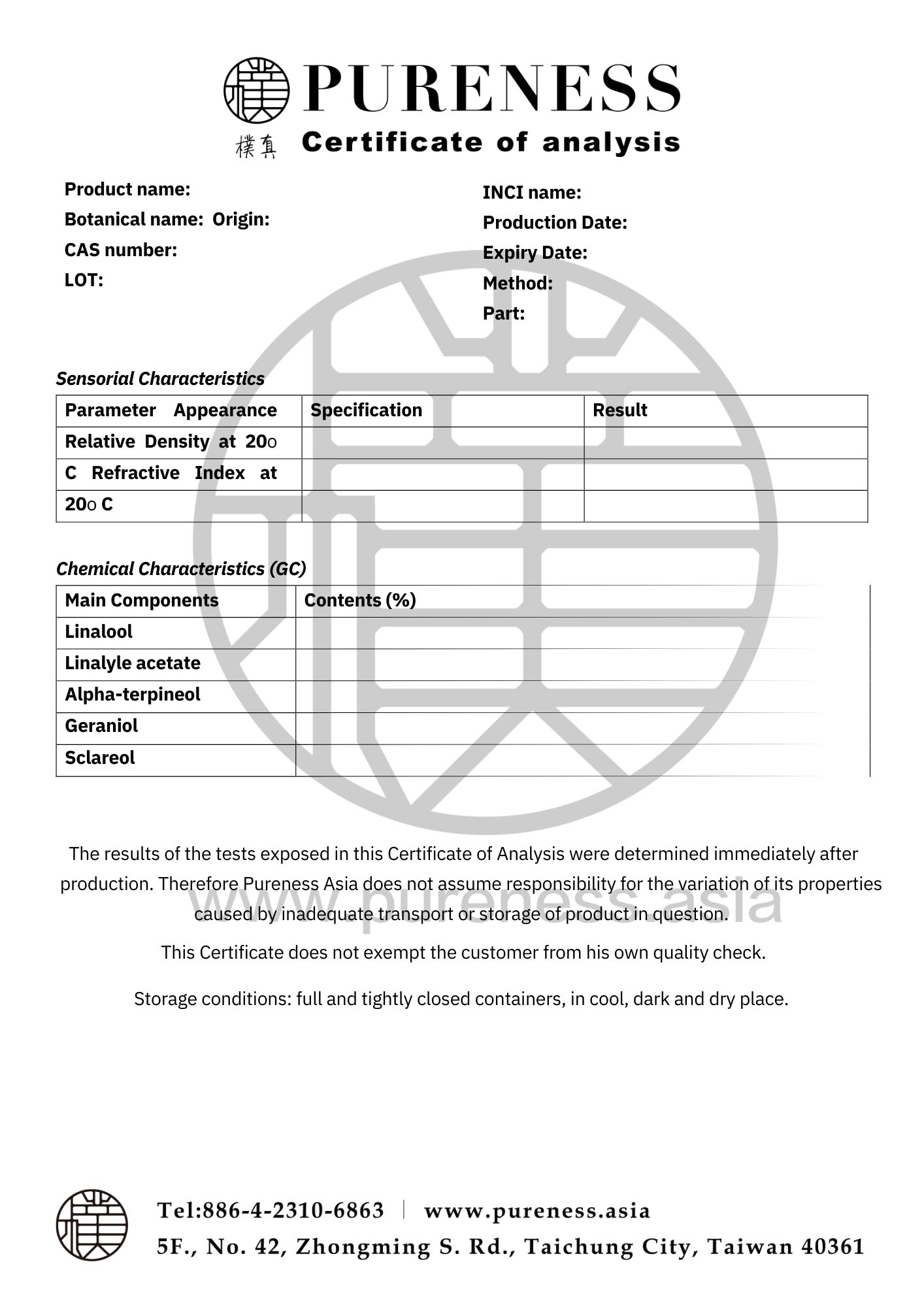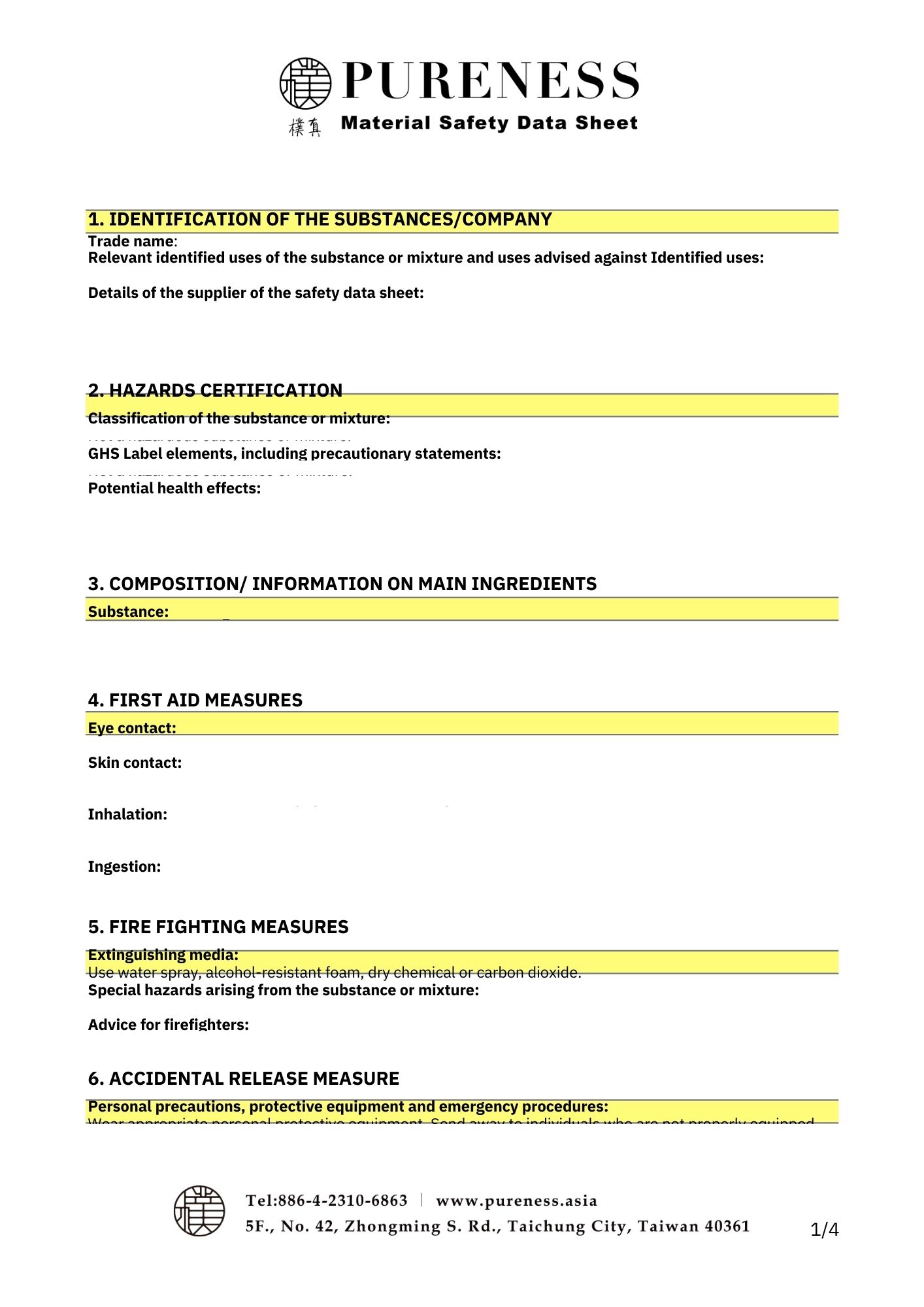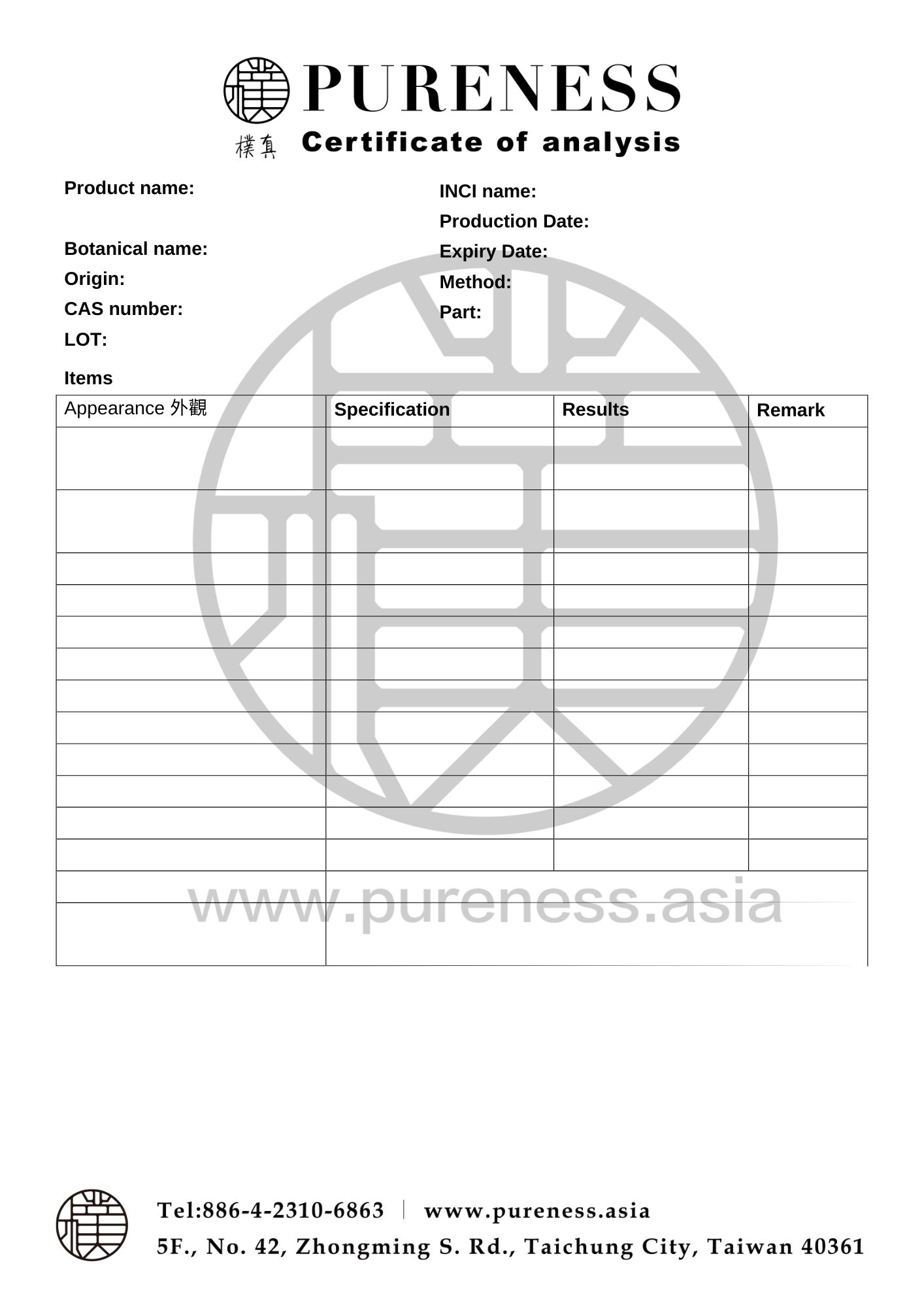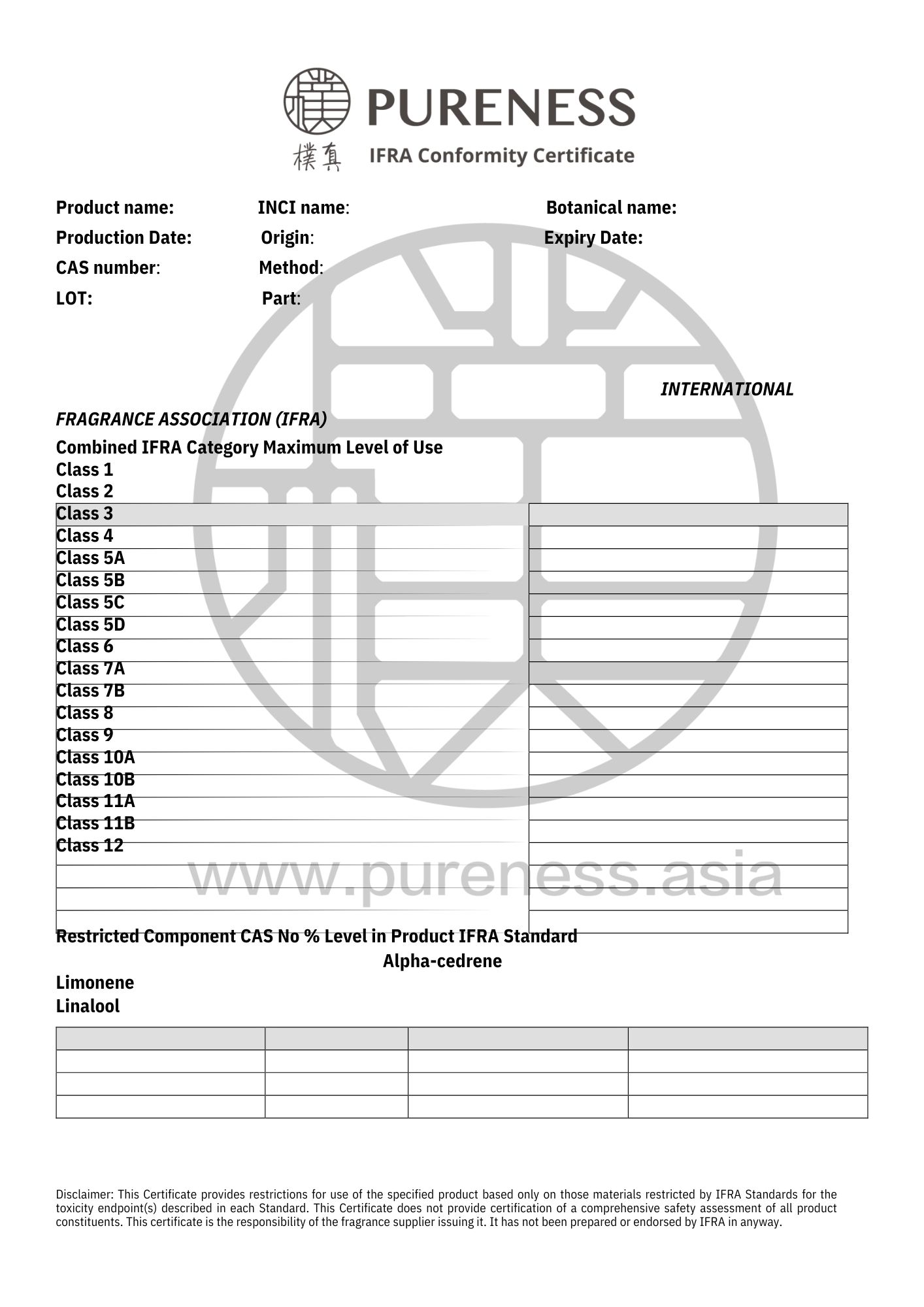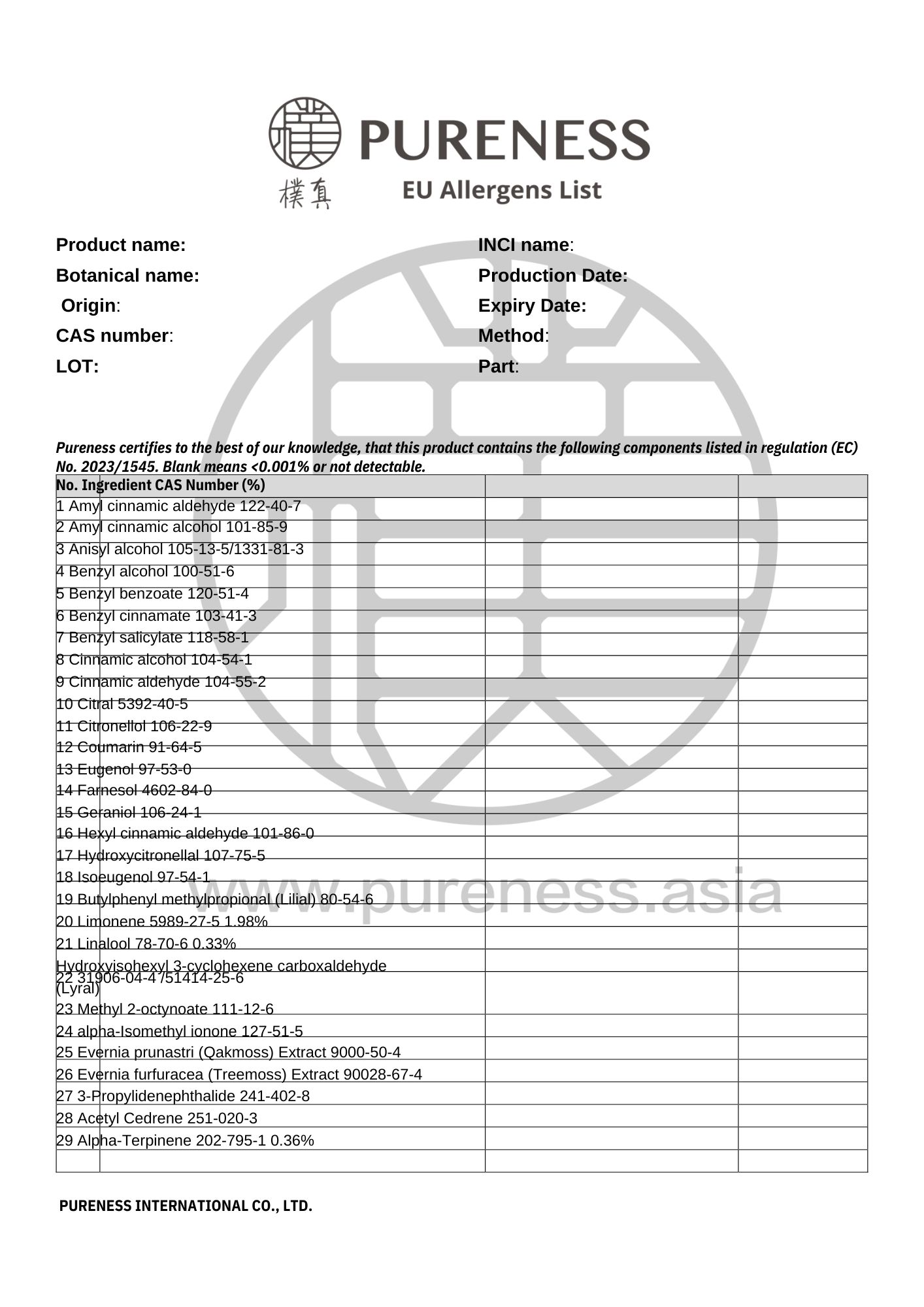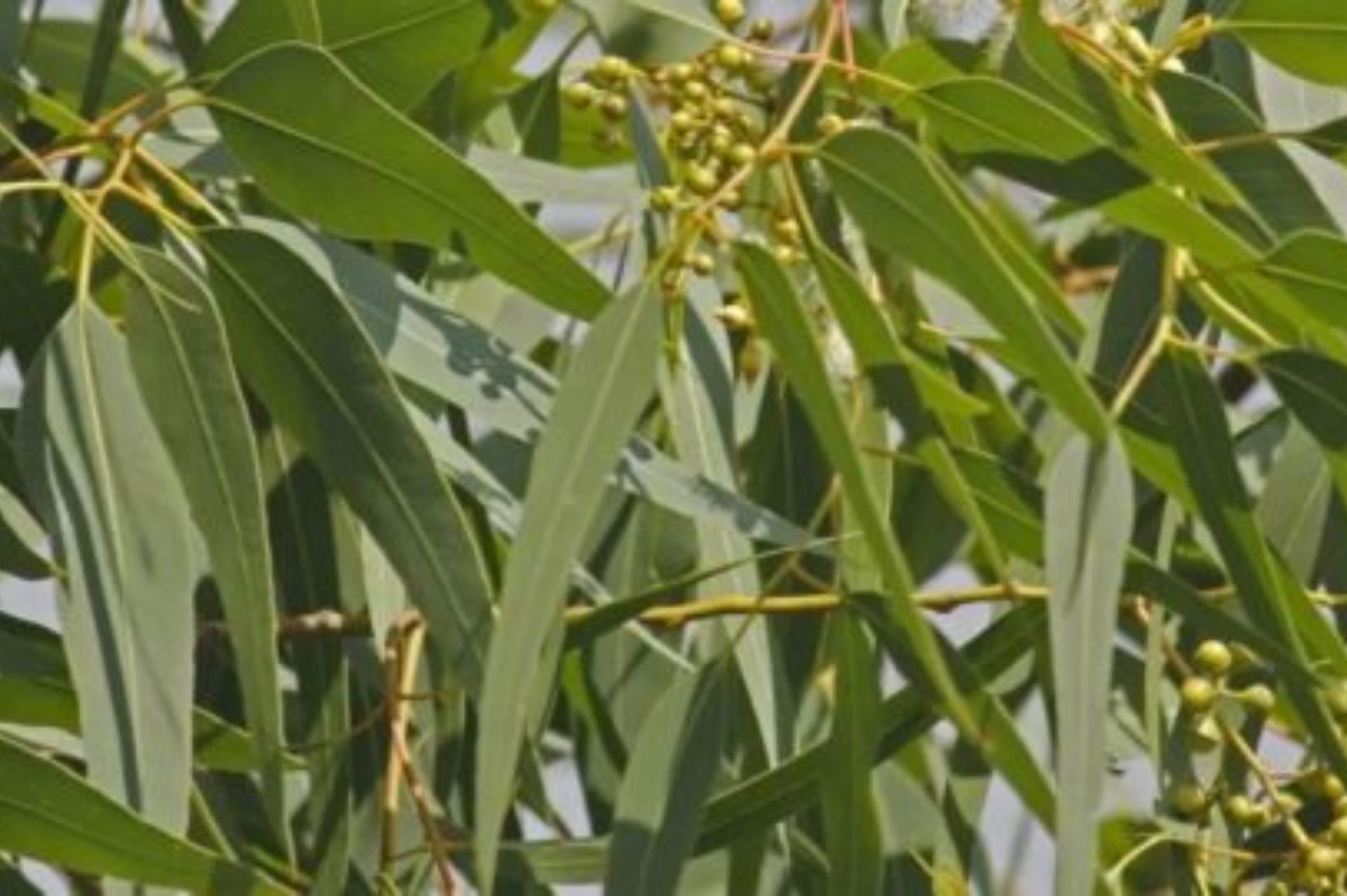
Eucalyptus australia
Scientific name|Eucalyptus radiata
Origin|Australia
Classification|Leaf series
Specifications|500g-25kg Please contact sales for details
Extraction part|Leaves
Extraction method | Distillation
Plant family|Myrtaceae
Aroma|Light, refreshing, and invigorating aroma
▎Essential Oil Introduction
Eucalyptus Australia (Eucalyptus radiata), commonly known as eucalyptus or the "solitary tree," is one of the iconic tree species among Australia's woody plants. It is typically an evergreen tree, growing up to 30 meters tall with a pyramid-shaped structure and gray fibrous bark. Its leaves are thin, mostly alternate, and sickle-shaped, with aromatic branches, leaves, and flowers. In early spring, it blooms with white, red, or yellow flowers in umbels or heads. Due to its adaptability to Australia's diverse geographic and climatic conditions, eucalyptus species cover large parts of the continent.
Eucalyptus trees grow rapidly and have high water requirements. With significant economic value and high survival rates in cultivation, 30 to 50 species of eucalyptus in Eastern Australia are considered representative of the region and serve as a primary food source for koalas, often evoking images of koalas hugging the tree and munching on the leaves.
Eucalyptus contains a volatile aromatic oil that is repellent to many insects. This oxygen-rich essential oil is known for its remarkable ability to purify the air and cleanse the respiratory system.
▎Component Analysis
|Main component: Oxides
Eucalyptus Australia contains a high proportion of oxides (such as 1,8-cineole), as well as monoterpenols, monoterpenes, and monoketones. The synergistic effects of these molecular structures have notable medicinal value, including compounds like α-pinene, limonene, α-terpineol, cis-piperitol, and geraniol
|Component 1: 1,8 cineole
Eucalyptus contains a high concentration of 1,8-cineole, which is commercially used in the production of essential oils for the pharmaceutical and cosmetic industries. Additionally, eucalyptus is widely cultivated for the production of paper pulp, plywood, and solid wood. Its aromatic oil has a remarkable range of biological activities.
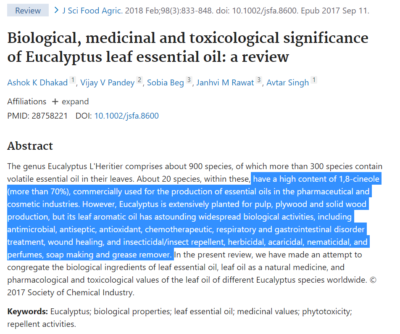
▸ In research, 1.8-Cineole has been found to have anti-inflammatory activity, making it useful as a mucolytic agent in upper and lower respiratory tract diseases.
|Component 2: Terpinene-4-ol
It is important to note that terpinene-4-ol, when stored for too long, can oxidize into carvacrol, which is skin-irritating.
|Raw Material Certifications
To obtain relevant certification information, please contact us on WhatsApp.
▎References
- Ashok K Dhakad et al. Biological, medicinal and toxicological significance of Eucalyptus leaf essential oil: a review. J Sci Food Agric. 2018 Feb;98(3):833-848.
- Bom Park , Eunson Hwang , Seul A Seo , Jin-Gyeong Cho , Jung-Eun Yang , Tae-Hoo Yi. Eucalyptus globulus extract protects against UVB-induced photoaging by enhancing collagen synthesis via regulation of TGF-β/Smad signals and attenuation of AP-1.Arch Biochem Biophys. 2018 Jan 1;637:31-39.
- Myburg et al. The genome of Eucalyptus grandis, Nature (2014), doi:10.1038/nature13308
- Elaissi A., Rouis Z., Salem N.A.B., Mabrouk S., Ben Salem Y., Salah K.B.H., Aouni M., Farhat F., Chemli R., Harzallah-Skhiri F. Chemical composition of 8 Eucalyptus species’ essential oils and the evaluation of their antibacterial, antifungal and antiviral activities. BMC Complement. Altern. Med. 2012;12:1.
- Cermelli C, Fabio A, Fabio G, Quaglio P. Effect of eucalyptus essential oil on respiratory bacteria and viruses. Curr Microbiol. 2008;56:89–92.
- Bennett, B.M. The El Dorado of Forestry: The Eucalyptus in India, South Africa, and Thailand, 1850–2000 55, Supplement 18 (2010): 27-50.
- Tyagi AK, Malik A. Antimicrobial potential and chemical composition of Eucalyptus globulus oil in liquid and vapour phase against food spoilage microorganisms. Food Chem. 2011;126:228–235.
- Blakely, W.F.A Key to the Eucalypts: with descriptions of 522 species and 150 varieties. Third Edition, 1965, Forest and Timber Bureau, Canberra.
- Boland, D.J.; M.I.H.; McDonald; M.W.; Chippendale; G.M.; Hall; N.; Hyland; B.P.M.; Kleinig; D.A. Forest Trees of Australia. Collingwood, Victoria: CSIRO Publishing. 2006. 5th edition. ISBN 0-643-06969-0
- Brooker, M.I.H.; Kleinig, D.A. Field Guide to Eucalyptus. Melbourne: Bloomings. 2006.Third edition. ISBN 1-876473-52-5 vol. 1. South-eastern Australia.
- Sartorelli P, Marquioreto AD, Amaral-Baroli A, Lima ME, Moreno PR. Chemical composition and antimicrobial activity of the essential oils from two species of Eucalyptus. Phytother Res. 2007;21:231–233.
- Kelly, Stan, text by G. M. Chippendale and R. D. Johnston, Eucalypts: Volume I. Nelson, Melbourne 1969, 1982, etc.
- L'Heritier de Brutelles, C. L. Sertum Anglicum. Paris: Didot. 1789.
- Richard K. P. Pankhurst. Economic History of Ethiopia. Addis Ababa: Haile Selassie I University. 1968.
- Boland, D.J., Brophy, J.J., and A.P.N. House, Eucalyptus Leaf Oils, 1991, ISBN 0-909605-69-6
- FAO Corporate Document Repository, Flavours and fragrances of plant origin
- Cermelli C, Fabio A, Fabio G, Quaglio P. Effect of eucalyptus essential oil on respiratory bacteria and viruses. Curr Microbiol. 2008 Jan;56(1):89-92.
- Ács K, Balázs VL, Kocsis B, Bencsik T, Böszörményi A, Horváth G. Antibacterial activity evaluation of selected essential oils in liquid and vapor phase on respiratory tract pathogens. BMC Complement Altern Med. 2018 Jul 27;18(1):227.
- Yang C, Hu DH, Feng Y. Antibacterial activity and mode of action of the Artemisia capillaris essential oil and its constituents against respiratory tract infection-causing pathogens. Mol Med Rep.2015 Apr;11(4):2852-60.
- Biedenbach DJ, Jones RN. Update of cefditoren activity tested against community-acquired pathogens associated with infections of the respiratory tract and skin and skin structures, including recent pharmacodynamic considerations. Diagn Microbiol Infect Dis. 2009 Jun;64(2):202-12.
- Hassan ST, Majerová M, Šudomová M, Berchová K. [Antibacterial activity of natural compounds - essential oils]. Ceska Slov Farm. 2015 Dec;64(6):243-53.
|Some images sourced from the internet. Contact for copyright removal|
